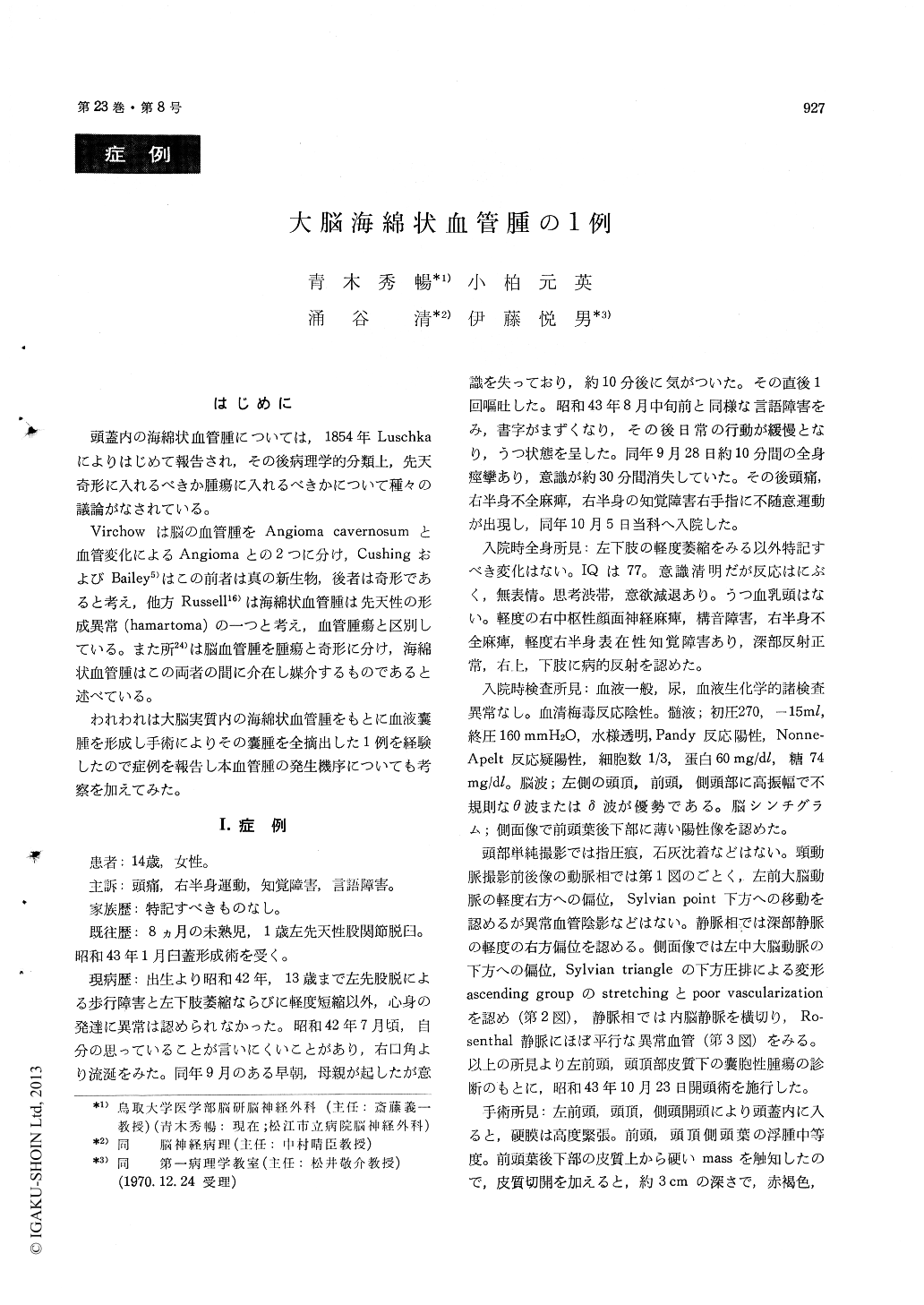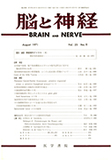Japanese
English
- 有料閲覧
- Abstract 文献概要
- 1ページ目 Look Inside
はじめに
頭蓋内の海綿状血管腫については,1854年Luschkaによりはじめて報告され,その後病理学的分類上,先天奇形に入れるべきか腫瘍に入れるべきかについて種々の議論がなされている。
Virchowは脳の血管腫をAngioma cavernosumと血管変化によるAngiomaとの2つに分け,CushingおよびBailey5)はこの前者は真の新生物,後者は奇形であると考え,他方Russell16)は海綿状血管腫は先天性の形成異常(hamartoma)の一つと考え,血管腫瘍と区別している。また所24)は脳血管腫を腫瘍と奇形に分け,海綿状血管腫はこの両者の間に介在し媒介するものであると述べている。
The authors reported a case of well-encapsulated blood cyst and revealed its origin to be cavernous angioma pathologically.
A 14-year-old girl had suffered from transient attacks of speech disturbance and unconsciousness since July, 1968. She developed a headache, right hemiparesis and ipsilateral hypesthesia following a general convulsion, and admitted to the University Hospital in October, 1969.
Carotid angiography, brain scan and electroence-phalography revealed a space-occupying lesion inthe left fronto-parietal region, though there was no angiographic evidence of vascular malformation. A left fronto-temporoparietal craniotomy disclosed a well encapsulated, hen egg-sized tumor in the postero-inferior portion of the frontal subcortex. The tumor was cystic and contained fresh blood, although there was no vissible vessels blowing into the tumor. The tumor was totally removed and the patient was discharged with residual signs of a right hemiparesis and slight dysarthria.
On pathologic examination, the tumor was encap-sulated by thick collagenous tissue with angiomatous component, and was separated by thick septa toseveral cavities filled with blood.
The inner surface of the cavities was covered by the granulation tissue of various stages. The septa contained features of cavernous angioma, vessels of which showed destruction of the thin walls in a part.
It was supposed that the tumor of this case might be a vascular malformation rather than a neoplasm in a true sense and that the blood cyst would be constructed by the repetitive destruction and regeneration of tissue in cavernous angioma.

Copyright © 1971, Igaku-Shoin Ltd. All rights reserved.


